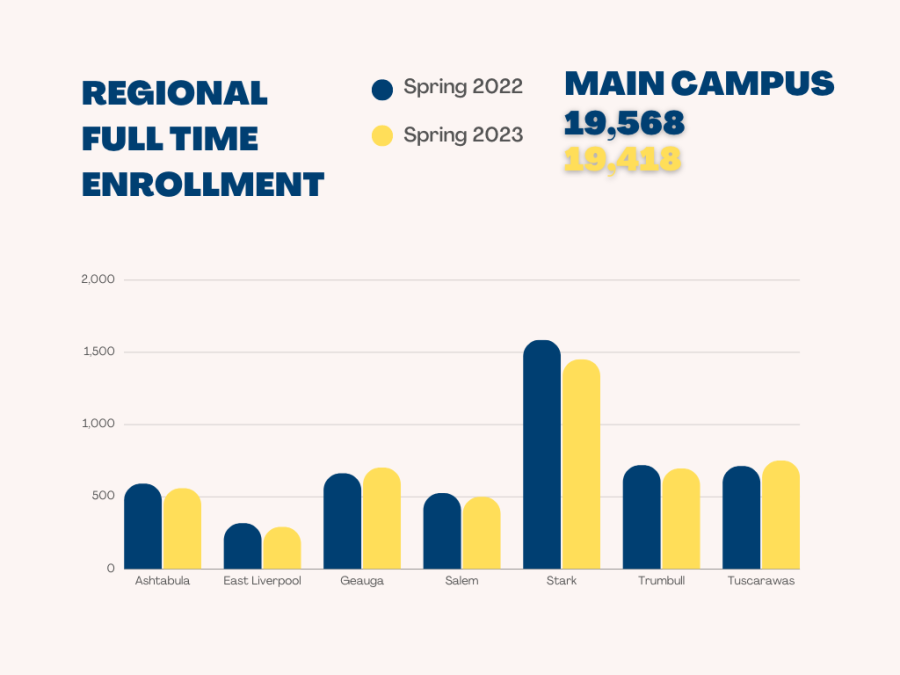Spring enrollment data shows stability
February 17, 2023
Kent State’s spring enrollment data show signs of enrollment numbers stabilizing after a six-year decline.
Ohio colleges are required to submit enrollment data to the state on the 15th day of each semester. The data for the current year is compared to the same data from the previous semester.
The numbers show enrollment at the Kent Campus is down 0.77%, and enrollment across all eight campuses is down 1.28%.
“I was pleasantly surprised,” said Sean Broghammer, vice president for enrollment management. “If you go back to the fall report, we were down 2.4%.”
Broghammer said COVID-19 is responsible for the decline happening in recent years.
“We’re still dealing with the two small classes that we had during the pandemic,” Broghammer said. “We had 3,819 [freshmen] in fall 2020 and then 3,982 in fall 2021, … because those students, even if they persist and retain at the same rate [as other classes], were just very small classes compared to what we typically had before.”
Transfer student enrollment was also impacted by COVID. Neighboring community colleges’ enrollment numbers were down, causing Kent State to have fewer transfer students each semester.
The regional campuses saw the largest amount of decline. Peggy Shadduck, the vice president for regional campuses, saw the data in a positive light.
“The regional campus system actually came out way better than predicted this spring,” Shadduck said. “What we’re most pleased to see is that we had a higher percentage of our first-year students that returned in the spring who had been with us in the fall than we had last year.”
The seven regional campuses had an average enrollment decline of -2.69% with the Stark campus having the largest enrollment decline of 8.49%.
“I think part of [the decline is the] economy, part of its potential for other jobs and just the high amount of competition that is out there for students,” Broghammer said.
The job market is another factor that impacts regional enrollment.
“There are more people through an area like the regional campuses who will decide to delay their education because they can get paid pretty well at an entry level [job],” Shadduck said.
This unpredictability is due to certain classes being available on each campus, Shadduck said. Certain online classes are available at one regional campus one semester, then will be offered at a different campus next semester. The online class enrollment impacts each campus’ enrollment.
Despite the negative enrollment growth, data is showing signs of improving and stabilizing for main campus. The growing freshman class is one of those indicators.
“It’s a good size really, back to a pre-pandemic number,” Broghammer said.
International student numbers are beginning to grow back to pre-pandemic levels after lockdown restrictions kept students from traveling.
“We’ve actually seen growth and a revitalized applicant pool, both on the undergraduate and graduate level,” Broghammer said.
Future indicators are predicting enrollment growth.
“Fall 2023, at least early preliminary indicators, is looking very positive on our incoming student class,” Broghammer said. “Things are positive right now in terms of applications, admits and early deposits.”
Early indicators show neutral and positive gains in enrollment are on the horizon.
“Everything is playing out until it stabilizes,” Broghammer said. “We anticipate, again very preliminary, by fall 2024 that hopefully our decline is at a zero or even a potential positive growth.”
Jocy Holtsberry is a reporter. Contact het at [email protected].












